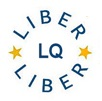Cultural Heritage and the Public Domain
DOI:
https://doi.org/10.18352/lq.8089Keywords:
cultural heritage, open access, digitisationAbstract
For centuries, libraries, archives and museums from across Europe have been the custodians of our rich and diverse cultural heritage. They have preserved and provided access to the testimonies of knowledge, beauty and imagination, such as sculptures, paintings, music and literature. The new information technologies have created unbelievable opportunities to make this common heritage more accessible for all.
Recently, the European Commission commissioned a ‘Comité des Sages’ to make recommendations on ways and means to make Europe's cultural heritage and creativity available on the Internet and to preserve it for future generations. In the United States the Association of Research Libraries (ARL) endorsed a number of principle recommendations to its members regarding the digitisation of cultural heritage. Both the Comité des Sages and the ARL emphasize the added value of digitisation. The Comité underlines that the digitised material can in itself be a driver of innovation and can be at the basis of new services in sectors such as tourism and learning (Comité des Sages 2011) and the ARL stresses the added value for researchers (ARL Principles July 2010). For over a century, libraries have participated in successful resource sharing cooperatives that have made content widely accessible. According to both the ARL and the Comité, the same spirit should govern commercial digitisation activities. In the best of all possible worlds, there would in our view be some level of free access to all content, with only special value-added services restricted to a subscription model.
A landmark in the discussion about Open Access to information is the Berlin Declaration on Open Access to Knowledge in the Sciences and Humanities. Referring to this Declaration, people often put emphasis on recent research publications. But the following is also one of the objectives of the Declaration: “encouraging the holders of cultural heritage to support open access by providing their resources on the Internet” (Berlin Declaration 2003). Therefore, in the spirit of the Berlin Declaration, the ARL encourages its members’ libraries to grant all non-commercial users “a free, irrevocable, worldwide, right of access to, and a license to copy, use, distribute, transmit and display the work publicly and to make and distribute derivative works, in any digital medium for any responsible purpose, subject to proper attribution of authorship”. And: “If fees are to be assessed for the use of digitised public domain works, those fees should only apply to commercial uses” (ARL Principles July 2010).
In our view, cultural heritage institutions should make public domain material digitised with public funding as widely available as possible for access and reuse. The public sector has the primary responsibility to fund digitisation. The involvement of private partners, however, is encouraged by ARL as well as the Comité des Sages. Private funding for digitisation is a complement to the necessary public investment, especially in times of economic crisis, but should not be seen as a substitute for public funding. As we can see from these reports there are a number of arguments in favour of digitisation and also of providing maximum accessibility to the digitised cultural heritage.
In this paper we will investigate the legal aspects of digitisation of cultural heritage, especially public domain material. On the basis of these we will make an inventory of policy considerations regarding reuse. Furthermore, we will describe the conclusions the National Library of the Netherlands (hereafter: KB) has formulated and the arguments that support these. In this context we will review public-private partnerships and also the policy of the KB. We will conclude with recommendations for cultural heritage institutions concerning a reuse policy for digitised public domain material.
Downloads

Downloads
Published
Issue
Section
License
Copyright (c) 2012 Bas Savenije, Annemarie Beunen

This work is licensed under a Creative Commons Attribution 4.0 International License.





